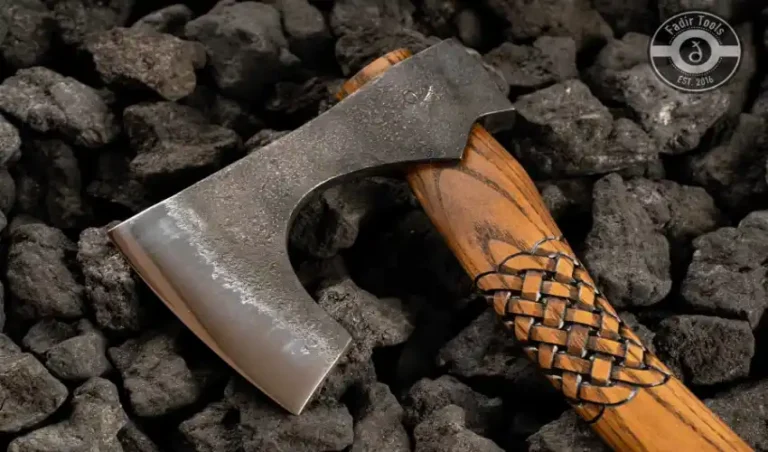Introduction
The Viking Age, spanning from the late 8th to early 11th century, is renowned for its legendary seafarers and their profound influence on medieval Europe. Among the tools that symbolized their strength and ingenuity was the Viking axe. This instrument was more than a weapon; it was a versatile tool that played a crucial role in shaping the everyday life and combat strategies of the Norse people.
Origins and Early Usage
The origins of the Viking axe can be traced to simple stone and bronze tools used by the Norse and their ancestors. Initially, axes served practical purposes, such as woodcutting and carpentry. Over time, as societies evolved and conflicts became more frequent, the axe transitioned from a utilitarian tool to a weapon of war. By the time of the Viking Age, axes were common household items that doubled as formidable weapons.
Design and Craftsmanship
Viking axes varied in size and complexity, reflecting their multiple uses. The most basic types were simple hand axes used for cutting and splitting wood. However, for battle, these axes were forged with distinctive designs:
- Bearded Axes: Known for their extended, curved lower blade, the bearded axe was designed to hook and pull an opponent’s shield, disarm them, or control their movements. This strategic advantage made it popular in combat.
- Broad Axes: These had larger, broader blades and were primarily used in ceremonial or high-ranking warrior contexts. Their menacing size was symbolic of power and authority.
- Double-Headed Axes: Though less common in practical warfare due to weight, double-headed axes were depicted in Norse art and sagas, emphasizing the ferocity of Viking warriors.
The craftsmanship behind a Viking axes was meticulous. Blacksmiths of the era heated and shaped iron, often reinforcing the edges with steel to enhance sharpness and durability. Axes were not only tools of war but prized possessions, often inlaid with intricate carvings or adorned with silver and bronze.
Axes in Combat and Warfare
Viking raids were notorious across Europe, and their axes became synonymous with the image of the fierce Norse warrior. The practicality of the axe was evident in its affordability; unlike swords, which were expensive and reserved for the elite, axes were accessible to most Vikings. This democratization of weaponry allowed even farmers to transform into formidable warriors.
Axes used in combat were typically lightweight with a long haft, allowing them to be wielded with precision and force. The combination of strength and speed gave Vikings the upper hand in battles, where they could strike powerful, decisive blows or use the axe to maneuver shields and create openings in their opponent’s defense.
Cultural Significance
The Viking axe held deep cultural and symbolic significance. In Norse mythology, axes were linked to gods and heroes. For instance, the god Thor wielded Mjölnir, often depicted as an axe-like hammer in various artistic interpretations. This association underscored the axe as a tool of divine might and protection.
Burial practices also reflected the importance of axes. High-status individuals were often buried with their axes, symbolizing their power and readiness for the afterlife. These axes were sometimes ornately decorated, suggesting that their role extended beyond mere functionality to status symbols and spiritual talismans.
The Transition to Modern Times
As the Viking Age waned and European warfare evolved, the traditional Viking axe gradually fell out of favor in battle. New weaponry and techniques rendered the simple axe less effective in open combat. However, the legacy of the Viking axe persisted, influencing later medieval pole weapons like the halberd and bardiche, which combined the axe blade with spear-like functions for increased versatility.
Despite changes in military strategy, the axe remained essential for daily tasks in Nordic regions. Its evolution continued, adapting to the needs of logging and building in the harsh Scandinavian environment.
Modern Interpretations and Revival
Today, the Viking axe enjoys a revival in popular culture, fueled by media portrayals and historical reenactments. Shows like Vikings and The Last Kingdom have reignited interest in these powerful tools, showcasing their tactical use and craftsmanship. Additionally, modern blacksmiths and artisans craft replicas that honor traditional techniques while incorporating contemporary materials.
The axe has also become a popular symbol in modern Nordic identity, representing strength, resilience, and a connection to heritage. Collectors, historians, and enthusiasts celebrate this piece of history by studying its variations, designs, and cultural significance.
Conclusion
The Viking axe’s evolution from a simple tool to a symbol of power encapsulates the adaptability and ingenuity of the Norse people. It reflects a culture that balanced daily survival with the art of war, influencing generations of weaponry and storytelling. Whether admired for its utility, studied for its history, or revered as a symbol of Norse identity, the Viking axe remains an enduring emblem of the Viking Age’s rich legacy.
